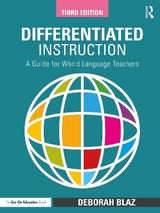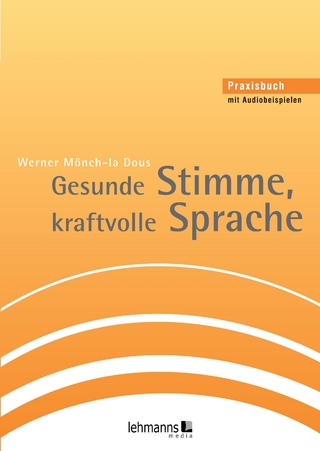
Differentiated Instruction
Routledge (Verlag)
978-1-138-90618-1 (ISBN)
- Titel erscheint in neuer Auflage
- Artikel merken
Features new to this edition include:
Sample thematic units to make your lessons more authentic and immersive
New strategies for using technology to differentiate world language instruction
Additional checklists, rubrics, and feedback forms to help you organize your lesson plans and track students’ progress
New connections to the Common Core State Standards, the ACTFL Standards, Webb’s Depth of Knowledge, and Bloom’s Taxonomy
You’ll also learn how to differentiate assessment effectively to help all students show their full potential. Classroom-ready tools and templates can be downloaded as free eResources from our website (www.routledge.com/9781138906181) for immediate use.
Deborah Blaz has taught French to grades 7-12 for the past 36 years in Indiana. She also serves as the World Language Department Chair at her school.
eResources
I. DIFFERENTIATED INSTRUCTION: WHAT IT IS/ WHAT IT ISN’T
What is Differentiated Instruction?
What Differentiated Instruction IS
What Differentiation is NOT
Some Research to Support Differentiation
II. FROM CONTENT TO PROCESS TO PRODUCT
Content, or What to Teach
Process, or How to Practice
Product, or How to Assess
Preparing Yourself
Preparing the Students
Management Issues and Ideas
III. PLANNING A DIFFERENTIATED UNIT
Identify What Is to Be Taught (Content)
Pre-assess Students’ Needs and Capabilities
Choose the Form(s) of Assessment to Be Used (Product )
Decide on the Method of Presentation
Classroom Environment
Select a Variety of Learning Strategies (Process)
Sample Units
Learning Centers
Interdisciplinary Units
Cultural Adventure Unit: Language in Our Community (Spanish)
Project-Based Learning Unit
Checklist for a Differentiated Lesson or Unit
Checklist for Observing a Lesson/Unit that Uses Differentiated Instruction
IV. IDEAS SMORGASBORD
Vocabulary
Speaking/Listening
Reading
Post-Reading Projects/Strategies
Writing
Review
Other
V. Differentiated Assessment
Use Choice
Use Context
Use Variety
Managing Grades
VI. Reflections on Differentiation
Graphics
Frequently Asked Questions and Answers.
APPENDIX A: CHECKLISTS
APPENDIX B: THE LANGUAGE OF DIFFERENTIATED INSTRUCTION: KEY WORDS AND CONCEPTS
APPENDIX C: LISTS OF ACTIVITIES AND STRATEGIES BY STANDARDS
Common Core
ACTFL
References
| Erscheinungsdatum | 02.06.2016 |
|---|---|
| Zusatzinfo | 5 Tables, black and white; 70 Line drawings, black and white; 9 Halftones, black and white |
| Verlagsort | London |
| Sprache | englisch |
| Maße | 210 x 280 mm |
| Gewicht | 476 g |
| Themenwelt | Schulbuch / Wörterbuch |
| Geisteswissenschaften ► Sprach- / Literaturwissenschaft ► Sprachwissenschaft | |
| Sozialwissenschaften ► Pädagogik ► Allgemeines / Lexika | |
| ISBN-10 | 1-138-90618-2 / 1138906182 |
| ISBN-13 | 978-1-138-90618-1 / 9781138906181 |
| Zustand | Neuware |
| Informationen gemäß Produktsicherheitsverordnung (GPSR) | |
| Haben Sie eine Frage zum Produkt? |
aus dem Bereich



